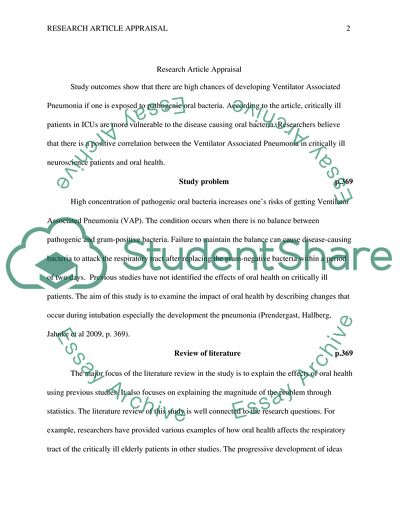Cite this document
(Research Article Appraisal Essay Example | Topics and Well Written Essays - 1000 words, n.d.)
Research Article Appraisal Essay Example | Topics and Well Written Essays - 1000 words. https://studentshare.org/medical-science/1811924-ventilator-associated-pneumonia
Research Article Appraisal Essay Example | Topics and Well Written Essays - 1000 words. https://studentshare.org/medical-science/1811924-ventilator-associated-pneumonia
(Research Article Appraisal Essay Example | Topics and Well Written Essays - 1000 Words)
Research Article Appraisal Essay Example | Topics and Well Written Essays - 1000 Words. https://studentshare.org/medical-science/1811924-ventilator-associated-pneumonia.
Research Article Appraisal Essay Example | Topics and Well Written Essays - 1000 Words. https://studentshare.org/medical-science/1811924-ventilator-associated-pneumonia.
“Research Article Appraisal Essay Example | Topics and Well Written Essays - 1000 Words”. https://studentshare.org/medical-science/1811924-ventilator-associated-pneumonia.


